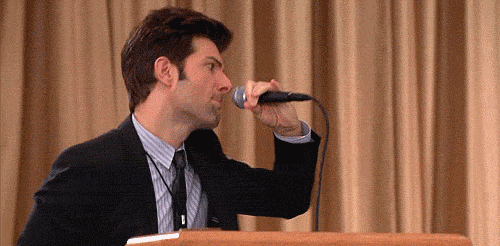"The classics shouldn't be reserved for exceptional students, and young adult literature shouldn't be reserved for at-risk readers. When we create that dichotomy, we send an elitist message about the classics and an inferior message about young adult literature--and we fail our students" (513).
Nothing frustrates me more than the highbrow/lowbrow literature discussion. I once got into a Twitter fight about this with a professor, and I have no regrets.
Cole writes chapter 11 to integrate the classical canon with young adult literature through themes and motifs. As always, her tables are accessible and helpful, such as the one that states and theme and then gives both a classic and YA novel that incorporates that theme.
Chapter 12 continues along those same lines--commenting on the pop culture influence of young adult literature. "If we examine popular culture texts," Cole argues, "we find stories that mirror life experiences, provide escape outlets, and present commentaries on societal issues" (558). I have often been shocked at how poignant young adult literature can be, and how true not only to teenage experience, but to human experience.
I really appreciate her section on companion texts, even including TV shows! Relevance and buy-in is such a huge part of teaching high schoolers, and Cole gives plenty of resources for both. She also recommends different magazines, which my students love. I have so many magazines in my classroom it's unreal. It doesn't matter if it's the most current issue of Time or an issue of US Weekly from 2013...if it's sitting on a desk, my students will read it.
And that's what I love most about this textbook--the spectrum of reading material she presents. So many English teachers are snobs about the "classics" that the joy of reading is lost in their classrooms. I've long hoped that, if nothing else, my students will leave my room with a love of reading for fun. This text has helped me on my journey to get there.
Monday, May 4, 2015
Friday, May 1, 2015
Teaching Notes for This Star Won't Go Out
Earl, Esther. This Star Won't Go Out. New York: Dutton Books, 2014.
Author Information:
- Esther Grace Earl was diagnosed with thyroid cancer at the age of 12
- She loved to write, draw, and journal
- She died shortly after turning 16, and her parents published this book of her sketches, letters, journal entries, and more
- She met John Green at Leaky Con 09, and he wrote the introduction to her memoir, as well as dedicated The Fault in Our Stars to her
Summary of Plot and Characters:
This memoir is set up much like a diary, which is fitting, as it contains many journal entries of Esther's. It begins with words from her parents, Wayne and Lori, about her childhood. Her journal entries are chronological, with added drawings and letters from around the same time. The entries end with the last one she wrote, and are followed by a note from her dad explaining her death. His eulogy for her is next, followed by notes from her friends about the impact she made on their lives. The book is honest and poignant--no one is trying to make Esther out to be a saint. She was a normal teenager in many ways. However, the impact she made on others is evident. Teenagers would really connect with this book, and it would get them thinking about tough topics, such as their legacies. I would like to have students write a journal using Esther's as a jumping off point. They could write letters to family members, poems, and letters to their future selves.
Historical Placement/Relevance:
This is an interesting topic, because one of the Goodreads complaints about this book is that lots of teenagers die from cancer, but they never met John Green, so their words don't get published. Which is true. I think the message of this book, however, can still reach many. Teens (and adults!) can take so much for granted. This book puts family, friends, school, and other blessings into perspective. Furthermore, it's relatable because Esther was such a normal teenager. She was addicted to the internet, to Harry Potter, and was a Nerdfighter. Nerdfighteria has grown so large than hundreds of thousands have read Esther's work, watched her YouTube videos, and read John Green's words about her.
Annotated Bibliography:
Finley, Todd. "The Importance of Student Journals and How to Respond Efficiently." Edutopia. N.p., 01 Sept. 2010. Web. 1 May 2015.
I love Edutopia! This article explains both the importance of student journals, but also gives advice to teachers on how to respond to them, since it is such a time-consuming task. Mr. Finley quotes, "The legendary Toby Fulwiler, author of The Journal Book, writes, "Without an understanding of who we are, we are not likely to understand fully why we study biology rather than forestry, literature rather than philosophy. In the end, all knowledge is related; the journal helps clarify the relationship." I would have my students read this to understand the purpose of the assignment.
"Thyroid Cancer." Thyroid Cancer. American Cancer Society, n.d. Web. 01 May 2015.
Students would undoubtedly be curious about what thyroid cancer actually is. I would direct them to the American Cancer Society's web page on the disease for topics such as signs, symptoms, and statistics.
"Welcome to TSWGO." This Star Won't Go Out Foundation. N.p., n.d. Web. 01 May 2015.
This is the official website of Esther's foundation, run by her family. Students might enjoy reading through the various causes she's indirectly supported and learning more of her story. I might have students go here to develop a further understanding of how non-profits work.
Other Topics I Plan to Explore Further:
- How people get cancer and how it spreads
- TSWGO Foundation's charity rating
- Leaky Con because it sounds awesome!
Subscribe to:
Comments (Atom)


.png)